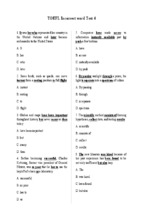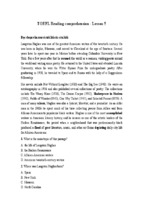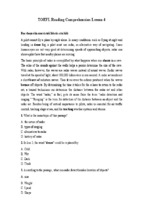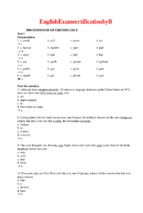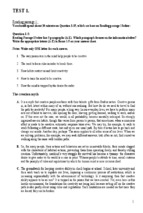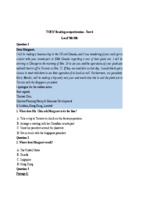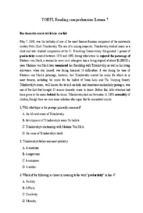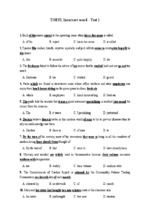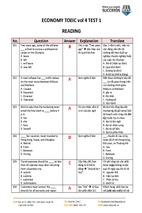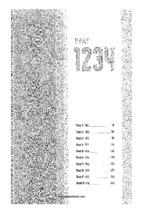DETERMINANTS OF BUSINESS HOUSEHOLDS’ PERFORMANCE
IN RURAL AREAS OF VINH PHUC AND BAC NINH PROVINCES
___________________________
A DISSERTATION
Presented to the Faculty of the Graduate School
Southern Luzon State University, Lucban, Quezon, Philippines
in Collaboration with
Thai Nguyen University, Socialist Republic of Vietnam
___________________________
In Partial Fulfillment
of the Requirements for the Degree
Doctor of Business Administration
___________________________
By
PHAM NGOC YEN (NANCY)
December 2013
i
APPROVAL SHEET
The Dissertation of
PHAM NGOC YEN
entitled
DETERMINANTS OF BUSINESS HOUSEHOLDS’ PERFORMANCE IN
RURAL AREAS OF VINH PHUC AND BAC NINH PROVINCES
Submitted in Partial Fulfilment of the Requirements for the Degree
DOCTOR OF BUSINESS ADMINISTRATION
A program offered by Southern Luzon State University,
Republic of the Philippines in collaboration with
Thai Nguyen University, Socialist Republic of Vietnam
has been approved by Oral Examination Committee
WALBERTO A. MACARAAN, EdD
Expert
CONRADO L. ABRAHAM, PhD
Expert
JOANNA PAULA A. ELLAGA, DBA
Expert
EDWIN P. BERNAL, DBA
External Panel
CECILIA N. GASCON, PhD
Chairman
Endorsed by:
Recommended by:
NELLY I. MENDOZA, DBA
Adviser
APOLONIA A. ESPINOSA, PhD
Dean
Accepted in Partial Fulfilment of the Requirements for the Degree
Doctor of Business Administration
_____________________
Date
WALBERTO A. MACARAAN, EdD
Vice President for Academic Affairs
ii
CERTIFICATE OF ORIGINALITY
This is to certify that the research work / dissertation entitled
“DETERMINANTS OF BUSINESS HOUSEHOLDS’ PERFORMANCE IN
RURAL AREAS OF VINH PHUC AND BAC NINH PROVINCES” orally
defended/ presented under the DBA Program jointly offered by Southern
Luzon State University of the Republic of the Philippines and Thai Nguyen
University of the Socialist Republic of Vietnam, embodies the result of original
and scholarly work carried out by the undersigned.
This dissertation does not contain words or ideas taken from
published sources or written works by other persons which have been
accepted as basis for the award of any degree from other higher education
institutions, except where proper referencing and acknowledgment were
made.
PHAM NGOC YEN
Researcher/Candidate
Date Orally Defended: __________
Noted:
DR. TU QUANH HIEN
Director, Center for Research and Education
Cooperation, Thai Nguyen University
Date: ____________
iii
ACKNOWLEDGMENT
The researcher would like to express her gratitude to the following who
made this study possible:
Professors of the Post-Graduate Department of Southern Luzon
State University – Philippines and the teachers of International Training
Center – College of Agriculture and Forestry - Thai Nguyên University,
especially to Dr. Nelly Mendoza, her dissertation adviser, for their generous
encouragement and support to finish this work;
Statistics Department of Vinh Phuc province and Bac Ninh
province, for their enthusiastic support on collecting and processing the data;
Business households in these two provinces, for their participation
and informative responses they have provided;
Management and colleagues at the University of Labour and
Social Affairs and General Statistics Office, for their emotional support and
encouragement; and
Family and Friends, for the unconditional love and support.
Pham Ngoc Yen
iv
TABLE OF CONTENTS
PAGE
TITLE PAGE ………………………………………………………………..
i
APPROVAL SHEET ……………………………………………………….
ii
CERTIFICATE OF ORIGINALITY ………………………………………..
iii
ACKNOWLEDGMENT …………………………………………………..
iv
TABLE OF CONTENTS …………………………………………………..
v
LIST OF TABLES ………………………………………………………….
vii
LIST OF FIGURES ………………………………………………………...
ix
ABBREVIATIONS ………………………………………………………….
x
LIST OF APPENDICES …………………………………………………...
xi
ABSTRACT …………………………………………………………………
xii
CHAPTER
I
3
Statement of the Problem ………………………………….
4
Objectives of the Study …………………………………….
5
Significance of the Study …………………………………..
6
Scope and Limitation of the Study ………………..………
6
Definition of Terms ………………………………………….
7
REVIEW OF LITERATURE ……………………………….
10
Conceptual Framework ………………………………….…
39
Research Paradigm ………………………………………...
III
1
Background of the Study …………………………………..
II
INTRODUCTION ……………………………………………
40
METHODOLOGY …………………………………………..
42
Locale of the Study …………………………………………
42
Research Design ……………………………………………
42
Data Gathering Procedure …………………………………
43
Sample and Sampling Technique …..…………………
43
Research Instrument ……………………………………….
44
Statistical Treatment ………………………........…….……
45
v
IV
50
Analysis of Situation of Business Activities and
Business Environment of the Business Households in
Rural Area of Vinh Phuc and Bac Ninh …………………..
50
Determination of Formality Indexes ………………………
86
Factors Influence to Decisions in the Expansion,
Development of the Business’ Households and
Influence to Business Performance of Business
Households ………………………………………………….
V
RESULTS AND DISCUSSIONS ………………………….
97
SUMMARY OF FINDINGS, CONCLUSIONS AND
RECOMMENDATIONS
Summary …………….………………………………………
117
Findings ……………………………………………………...
119
Conclusions …………………………………………………
121
Recommendations …………………………………………
122
REFERENCES ………………………...…………………………………..
126
APPENDICES ……………………………………………………………...
128
CURRICULUM VITAE …………………………………………………….
160
vi
LIST OF TABLES
TABLE
PAGE
4.1
Gender, Qualification, Experience of the Managers ……….
51
4.2
Number of Laborers in Sectors/ Provinces ………………….
52
4.3
Business Capital, Working Capital in Sectors/ Provinces …
53
4.4
Revenue, Profit in Sectors/Provinces ………………………..
54
4.5
Rate of Households with Intention of Business Expansion .
55
4.6
Quality, Recruitment and Training of Laborers ……………..
57
4.7
Quality and Accessibility of Inputs …………………………...
58
4.8
Accessibility to Bank Loans …………………………………..
61
4.9
Value of Loans and Rate of Loan Sources ………………….
62
4.10
General Assessment on Bank Loans ………………………..
63
4.11
Land Area and Rate of the Households in Form of Land
Use ………………………………………………………………
64
4.12
Capacity of Business Space Enlargement ………………….
65
4.13
Land Use Right Certificate ……………………………………
66
4.14
Main Reasons for Obstruction of Business Space
Development …………………………………………………...
67
4.15
Market Access and Competition ……………………………..
68
4.16
Importance of Infrastructure …………………………………..
69
4.17
Assessment on the Quality of Infrastructure Services ……..
71
4.18
Rate of Households Accessing and Using Other Services ..
73
4.19
Taxes and Tax Inspection …………………………………….
77
4.20
Assessment of the Households on State Officers and
Authorities ………………………………………………………
80
Accessibility to Information, Documents …………………….
82
4.21
vii
TABLE
PAGE
4.22
Role of Local Authorities in Product Sale …………………...
84
4.23
Average Value in Score Range of 9 Component Indexes ...
87
4.24
Contribution of Component Indexes for Variance of the
Four Factors ……………………………………………………
88
Average Value of Variables Reflecting the Households’
Business Performance ………………………………………..
89
4.26
Regression Analysis …………………………………………..
90
4.27
Weight of Component Indexes ……………………………….
91
4.28
Formality Index (FI) of Provinces and Districts ……………..
92
4.29
Average Statistic Value of Variables Used in the
Econometric Models …………………………………………..
99
4.30
Impacts of Business Environment on Profit and Revenue
100
4.31
Conversion into Enterprise Business of the Business
Households …………………………………………………….
104
Factors Affecting the Households’ Decision to Converse
into Enterprise Business ………………………………………
106
4.33
Business Registration of Sole Business Households ……...
110
4.34
Awareness of Benefits from Business Registration and
Reasons Provided by the Households Without Business
Registration …………………………………………………….
112
Factors Affecting Households’ Decision to Get Business
Registration …………………………………………………….
114
4.25
4.32
4.35
viii
LIST OF FIGURES
FIGURE
1.1
PAGE
Number of Non-Agricultural Business Household and
Employees in Non-Agricultural Business Household in 20042012 Period ………………………………………………………
2
Emulation and Analysis of Business Environment of
Business Households …………………………………………..
20
Determinants of Business Households’ Performance in
Rural Areas of Vinh Phuc and Bac Ninh Provinces ………….
40
Nine Factors which creates Business Results of the
Households ………………………………………………………
41
4.1
Business Situation in 2012 Compared to 2011 ………………
55
4.2
Capital Source Structure of the Business Households ……...
60
4.3
Informal Costs for State Employees in Total Income of
Business Households …………………………………………...
81
Assessment on Attitude of the Authorities to Operation of
Business Households …………………………………………...
83
4.5
Assessments of the Households on Local Authorities ………
85
4.6
Confidence of Business Households in the Court System ….
86
4.7
Provincial Formality Index (PFI) and District Formality Index
(DFI) ………………………………………………………………...
93
The Business Results of the Households and Formality
Indexes …………………………………………………………...
97
2.1
2.2
2.3
4.4
4.8
ix
ABBREVIATIONS
GDP
: Gross Domestic Product
FI
: Formality Index
DFI
: District Formality Index
PFI
: Provincial Formality Index
PCI
: Provincial Competitiveness Index
VCCI
: Vietnam of Chamber of Commerce and Industry
VNCI
: Vietnam Competitiveness Initiative
GSO
: General Statistics Office
IPSARD
MOLISA
: Institute of Policy and Strategy for Agriculture and Rural
Development
: Ministry of Labour, Invalids and Social
IRC
: Indochina Research and Consulting Company
x
LIST OF APPENDICES
APPENDIX
PAGE
A
Method to Define the Weight on Basis of Direct
Regression ……………………………………………………
129
B
Documents Relevant to Household Business …………….
134
C
Questionnaire ………………………………………………...
137
xi
ABSTRACT
Title of Research
: DETERMINANTS OF BUSINESS
HOUSEHOLDS’ PERFORMANCE IN RURAL
AREAS OF VINH PHUC AND BAC NINH
PROVINCES
Researcher
: PHAM NGOC YEN (NANCY)
Degree Conferred
: DOCTOR OF BUSINESS ADMINISTRATION
Name and Address
of Institution
: Southern Luzon State University, Lucban, Quezon,
Philippines and Thai Nguyen University, Socialist
Republic of Vietnam
Adviser
: Dr. Nelly I. Mendoza
Year Written
: 2013
______________________________________________________________
There have been lots of studies on business environment. However, they
concentrated only on business environment of enterprises and companies of large
scale, those with business registration, or on business environment of a locality in
general. These studies focus less on the business household environment
particularly in the rural areas. However, in socio-economic development,
household economies have always played an important role. Vinh Phuc and Bac
Ninh, the two provinces adjacent to Hanoi, had been observed to be contributing to
the economic and social development of Hanoi.
The study focused on determining the factors that influence business
households’ performance in the rural areas of Vinh Phuc and Bac Ninh
provinces in Vietnam. It aimed to study the factors of the business
environment creating an impact on establishment and development of
business households in rural areas of these two provinces. A Formality Index
(FI) was used to evaluate the business environment of business households. The
index was patterned with the Provincial Competitiveness Index (PCI)
xii
designed by Vietnam Chamber of Commerce and Industry. PCI is in a score
range of 1% of 100% but FIs are quantitative indicators that receive value on
a scale of 1 to 10. The significant differences between the FIs were assessed
according to their values. The higher value reflects a more business friendly
environment to the households and vice versa.
In the study, 500 business households were surveyed in the two (2)
provinces. Sampling was made through the hierarchical random method, with
layers of districts, communes and households. In each province, 250 business
households were sampled. The study calculated the FI of the sample districts
and estimated FI of the two provinces. The two important concern in building
the FI is to determine component indices and to estimate the weight of
component indexes. Although the FI method is similar to the PCI method, the
study made some adjustments to some factors during the formulation of the
component indices. Time cost, legal institution, and activeness of local
authorities” in PCI were transformed into access to capital, business
registration, and support from State authorities to make them suitable to the
target type of business environment.
The study calculated the FI for the sample districts and estimated FI for
the two provinces. The results showed that FI of Vinh Phuc, 6.18, was higher
than of Bac Ninh (6.15). These data showed that the current business
environment of business households in the rural areas of Vinh Phuc and Bac
Ninh provinces is not so good.
There were more fluctuations in the FI on the districts, from 5.9 to 6.6.
The districts with the most favorable business environment for business
households in Vinh Phuc were Lap Thach, Yen Lac and Vinh Tuong; and in
xiii
Bac Ninh, were Tien Du and Tư Son. The districts with the most unfavorable
business environment for business households in Vinh Phuc were Tam Duong,
Binh Xuyen; and in Bac Ninh, were Que Vo, Thuan Thanh and Yên Phong.
It was revealed that the business performance of the households was strongly
influenced by the availability of capital, labor, as well as experience in the
business market. Accessibility to human resources of high quality, easy
access to output market and good infrastructure are business environment
factors that have significant impacts on the business performance of the
households. Factors of informal charges or assistance from State authorities
were found to have insignificant impacts.
Analysis results showed that capital, land; human resources have a
great influence on the expansion and development of the business
households. On the other hand, the output market factors have also a great
influence
on
the
decisions
of
business
registration
and
business
transformation into enterprises. Facilitation from authority was also found
significant than other factors, but not clearly.
xiv
1
Chapter I
INTRODUCTION
Being a developing country, Vietnam has gained remarkable economic
achievement for nearly 30 years, both in economic growth and poverty
reduction. GDP per capita growth rate reached 7% during the last decade.
Poverty rate reduced from 58% in 1993 to 37% in 1998 and 14% in 2008.
Businesses’ household makes a great contribution to the economic growth. It
does not only help create jobs, increase income and increase state budget
revenues but also build biggest networks reaching to distant areas. Thus, it
developed distribution network, balance trading activities and local economy.
The economy will witness a transition from unofficial sector to official
sector. The number of agricultural household and non-agricultural production
business will decrease. However, in the context of an economic transition
facing a lot of difficulties, business households still play an important role.
They help reduce the negative impact of economic shocks on household.
Trade globalization brings about both opportunities and risks for the economy
(Easterly and Kraay, 2000; Winters and associates, 2004). When losing jobs
in business sector, employees can work in the household sector. Nguyen
(2010) indicates that a number of labors who get low-paid in company have
turned to household sector. Agricultural household can be also changed to
non-agricultural business activities in case of natural disasters and/or
business difficulties.
According to the total survey on non-agricultural production and
business establishment of General Statistics Office in 2004, there were 2.9
2
million of non-agricultural business establishment nationwide, providing jobs
for nearly 5 million labors (Figure 1.1). The number of business establishment
and employees in this sector has increased gradually. In 2012, there were 4.6
million business establishment, providing jobs for 7.8 million labor in the
nation.
Figure 1.1. Number of Non-Agricultural Business Household and Employees
in Non-Agricultural Business Household in 2004-2012 Period
Unit: thousand household, thousand employee
7797
8000
7436
7065
7000
6700
6594
6000
5584
5766
4988
5000
4629
3748
4000
2914
3053
3869
3986
4125
3300
3000
2000
1000
0
2004
2005
2006
2007
2008
number of business establishments
2009
2010
2012
number of labors
Source: Statistical Yearbook
However, compared to business sector, the development of household
is limited. Capital and human resources of business household is small and
hardly change over years. On average, each household consists of 2 labors
(Figure 1.1). The proportion of household with business registration is small,
about 27.5% in 2007. There has not been a favorable business environment
for business households (Phuoc Ha, 2006; IRC and IPSARD, 2011). Local
authorities pay much attention to business households as this is the sector
3
which generates the most state budget revenues (from tax) for the provinces
(IRC and IPSARD, 2011).
Background of the Study
There have been a large number of researches on business
environment; however, these researches often focus on general business
environment of the localities or the enterprises (eg. Freeman and associates,
2005; CAP, 2007). The number of researches focusing on household
business, especially in rural areas is limited. Amongst previous researches on
business environment, a notable research is on building Provincial
Competitiveness
Index
(PCI)
by
VCCI
collaborating
with
Vietnam
Competitiveness Initiative (VNCI) funded by USAID. Since its debut in 2005,
PCI has become an important tool to measure and evaluate business
environment of private sector in 63 provinces and cities in Vietnam. It also
helps local authorities point out restriction factors to business households,
especially environment and institution. However, PCI is designed for business
sector, not business household.
Vinh Phuc and Bac Ninh, the two provinces adjacent to Hanoi (Vinh
Phuc is bounded by the North of Hà Nội, Bac Ninh is bounded by the East of
Hanoi), have made significant contribution to economic development of the
capital city for the last years. In conformity to the National Plan by 2020, the
two provinces shall provide support for Hanoi to get a sustainable economic
development. Vĩnh Phúc City and Bắc Ninh City (2 central cities of the two
provinces) shall be satellite cities to help Hanoi to settle issues of
environment, materials and human resources. Therefore, socio-economic
4
development of the two provinces gets much attention from the Government.
Being a province of long-standing culture with development of numerous
traditional villages specializing in bronzing, carpentry, ceramics, Bắc Ninh has
opportunities and challenges completely different from that of Vĩnh Phúc, a
province having a lot of villages and communes with small trade of
agricultural, forestry and aquatic products (rice, bean, peanut, vegetable ) in
addition to its agricultural economy. Therefore, economic development of the
province cannot be separated from development of household business. It is
necessary to get a favorable business environment for development of
household business. In urban areas, with development of enterprises of
various types, business environment of the households also has significant
improvement. However, in rural areas, business environment of the
households doesn’t get much attention.
Statement of the Problem
Currently, there are two types of household business operating on
these localities: unregistered business households and registered business
households. Unregistered business households do transactions with subdistrict level authorities while registered business households do transactions
with both sub-district and district level authorities. From the practical
requirements above, the author conducted a study: “Determinants of
Businesses households’ performance in the rural areas of Vinh Phuc and Bac
Ninh provinces in Vietnam”.
The main purpose of the research is to compute the FI measurement
and estimate FI for the chosen province and district by using small-scale
estimation method. The research sought to answer the following questions:
5
1. What are the
situations of
business activities
and
business
environment of the business households in rural area of Vinh Phuc and
Bac Ninh through survey data?
2. What is the method that could measure and estimate FI? What is the FI
for provinces and districts?
3. What factors influence the decisions for expansion and development
that influence the business performance of the business’ households?
4. What are some policy recommendations to improve business
environment for private business households?
Objectives of the Study
Generally, this study aimed to study factors of business environment
affecting formation and development of business households in the rural
areas of Vinh Phuc and Bac Ninh province.
Specifically, the specific objectives of this research are to:
1. Analyze and compare the business environment of business
households in rural areas of 2 provinces through survey data;
2. Calculate the formality index (FI) of business households and use
FI to assess business environment of business households in the
rural areas of the 2 provinces;
3. Determine the role of the factors (9 factors) in the expansion,
development
and
business
performance
of
the
business’
households;
4. Provide recommendations to improve the business environment of
the business households in the rural areas of the 2 provinces.
6
Significance of the Study
The findings of the study are expected to benefit the following:
Researchers. Researchers may consider calculating the FI and use FI
as a measure to assess the business environment of the households with
other indicators.
Policy Makers. The research’s results can be used to propose to the
leaders of the two provinces, to review and make appropriate decisions to
create a favorable business environment for households. Policy makers can
use the result of the study to devise appropriate decisions in order to create a
favorable business environment to help households develop their businesses.
Scope and Limitation of the Study
To measure FI, the author conducted a survey on the business
environment of 500 households in 10 districts of Bac Ninh province and Vinh
Phuc province in 2012, as the respondents of this research (the research
collect data on household businesses which have the number of members of
less than 10 employees). This included Tam Dương, Bình Xuyên, Yên Lạc,
Vĩnh Tương, Lập Thạch in the districts of Vĩnh Phúc, while Yên Phong, Thuận
Thành, Quế Võ, Tiên Du, Từ Sơn represented Bắc Ninh.
These households were selected (registered business/unregistered
business) with a ratio of 6/4.
The study did not focus on business households which have more
than 10 employees. Households in the urban area of the two provinces were
not considered in the sample.
- Xem thêm -


